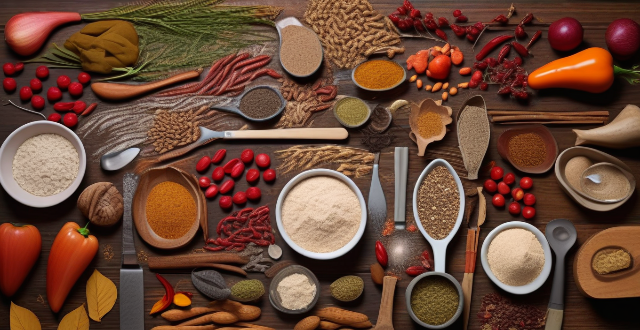The significance of spices in Indian cooking is multifaceted, encompassing flavor enhancement, cultural traditions, and medicinal benefits. Key spices like turmeric, cumin, coriander, mustard seeds, fenugreek, red chili powder, garam masala, curry leaves, asafoetida, and tamarind contribute to the complex flavor profiles characteristic of Indian cuisine. These spices are used through techniques such as tempering, grinding, and roasting to create a balance of tastes and visual appeal. Historically, spices were valuable commodities in trade and are integral to traditional medicine and religious practices. Regional variations in spice use reflect India's diverse geography and cultural heritage. Understanding the nuances of spice usage allows for a deeper appreciation of the artistry behind Indian dishes.

The Significance of Spices in Indian Cooking
Spices play a pivotal role in Indian cooking, not only for their flavor-enhancing properties but also for their cultural and medicinal significance. In this article, we will delve into the various aspects of spices in Indian cuisine.
Flavor and Aroma
Key Spices Used in Indian Cuisine
1. Turmeric - Known as "Haldi" in Hindi, turmeric adds a warm yellow color to dishes and has anti-inflammatory properties.
2. Cumin - "Jeera" is commonly used in tadka or tempering, which is the process of heating oil and adding spices to release their flavors.
3. Coriander - "Dhaniya" is used in both whole and powdered forms and provides a mild citrusy flavor.
4. Mustard Seeds - "Rai" is often used in pickles, chutneys, and tempering due to its pungent taste.
5. Fenugreek - "Methi" seeds are used in curries and pickles, while the leaves are used in salads and stews.
6. Red Chili Powder - "Lal Mirch" adds heat to dishes and varies in intensity based on the type of chili used.
7. Garam Masala - A blend of spices like cinnamon, clove, cardamom, and peppercorn, it's added at the end of cooking for a rich aroma.
8. Curry Leaves - "Kadi Patta" is used in tempering and provides a unique aromatic flavor.
9. Asafoetida - "Hing" is used sparingly due to its strong smell but adds depth to savory dishes.
10. Tamarind - "Imli" is used as a souring agent in various dishes like chutneys and curries.
How Spices Impact Flavor
- Layering of Flavors: Indian cooks use a combination of spices to create complex flavor profiles that evolve as you eat.
- Balance of Tastes: Spices help achieve a balance between sweet, sour, salty, bitter, and umami tastes.
- Visual Appeal: Colorful spices like turmeric and red chili powder enhance the visual appeal of dishes.
Cultural Significance
Historical Use of Spices
- Trade and Discovery: Spices were once highly valued commodities that played a significant role in ancient trade routes like the Silk Road.
- Traditional Medicine: Ayurveda, the traditional Indian system of medicine, uses spices for their therapeutic properties.
Regional Variations
- Geographical Influence: Different regions of India have distinct spice blends influenced by local climate and availability.
- Religious Practices: Some spices are integral to religious practices, such as offering turmeric during prayers.
Medicinal Benefits
Health-Promoting Properties
- Antioxidant Rich: Many spices contain antioxidants that can help combat free radicals in the body.
- Digestive Aids: Spices like ginger and cumin aid digestion and alleviate stomach issues.
Cooking Techniques
Methods of Using Spices
- Tempering: Heating oil with spices to release their essential oils and aromas before adding other ingredients.
- Grinding: Fresh grinding of spices just before use ensures maximum flavor and aroma.
- Roasting: Dry roasting spices before grinding enhances their depth of flavor.
Conclusion
Spices are not just mere ingredients in Indian cooking; they are an essential part of the culinary heritage that defines the richness and diversity of Indian cuisine. Their significance extends beyond flavor enhancement to encompass cultural traditions, medicinal benefits, and historical importance. By understanding the nuances of spice usage, one can appreciate the artistry behind every Indian dish.